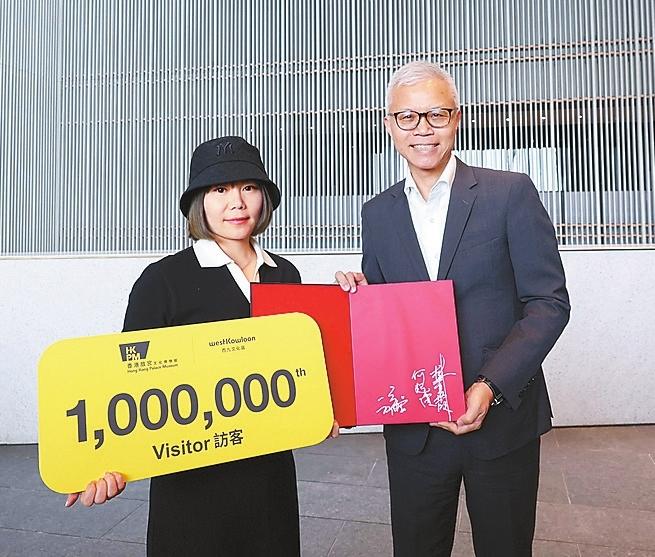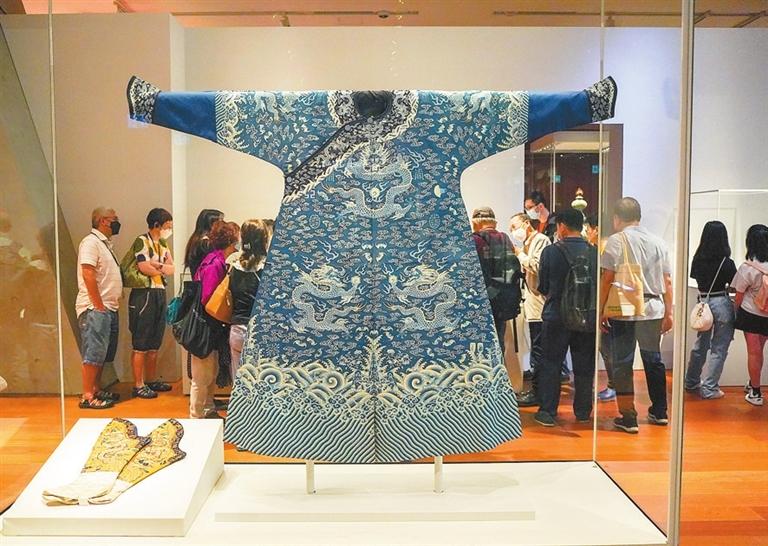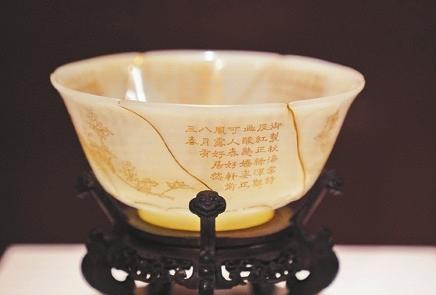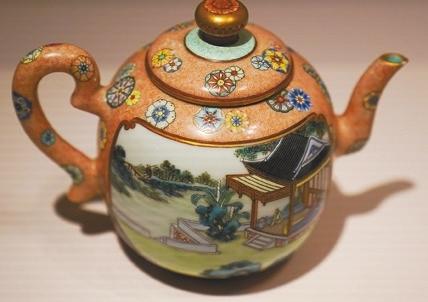





Wang Haolan Holly_cn@163.com ON April 17, the Hong Kong Palace Museum (HKPM) welcomed its one millionth visitor since its opening last July, who is a woman from Shanghai. To mark the milestone, Dr. Louis Ng, director of HKPM, greeted the visitor at the door and presented her with a souvenir. The gift was a catalog of the HKPM’s latest special exhibition, “Cartier and Women,” which will run through Aug. 14. It was signed by renowned actresses Brigitte Lin and Carina Lau, and businesswoman Pansy Ho, all of whom lent to the exhibition the Cartier tiaras they once wore. The keywords for the HKPM may vary from person to person: For the director, it is a remarkable museum that has already received over one million visitors in less than one year; for history and art lovers, it is a feast for the eyes with over 900 exhibits from the Palace Museum in Beijing, many of which have never been shown to the public before; for Hong Kong residents, it is a new cultural landmark in the West Kowloon Cultural District along Victoria Harbour; and for visitors from the Guangdong-Hong Kong-Macao Greater Bay Area (GBA), it allows them to enjoy the treasures of the Palace Museum in their own backyard, without having to travel hours to Beijing. However, the mission and role of HKPM is best expressed in a quotation from its official website: “Exploring Chinese art and culture thru a new lens.” From Palace Museum to GBA On our way to the HKPM’s office area for an interview with Dr. Ng, we encountered a large crowd of Mandarin-speaking visitors rushing to admire the treasures in the Palace Museum, even on a weekday. “Visitors from the mainland have accounted for about 40% of our total visitors in recent weeks,” said Ng. “We feel committed to shortening the distance between the Palace Museum and the residents of the South China region, while meeting their expectations for an opportunity to admire the time-honored Chinese history, art and culture at their doorstep.” The museum is a collaborative project between the Western Kowloon Cultural District Authority and the Palace Museum and is funded by The Hong Kong Jockey Club Charities Trust with a donation of HK$3.5 billion (US$447.65 million) for its establishment, annual exhibitions and education programs taking place from 2023 through 2031. “The Palace Museum in Beijing assisted us in establishing the museum, curating the exhibitions, and transferring and conserving the exhibits,” said Ng. “Of HKPM’s nine exhibition galleries, seven were curated under the guidance of the Palace Museum. They also lent us over 900 items from their best collections and agreed to display them permanently at the HKPM.” It is the largest and highest-level cultural heritage exhibition of the Palace Museum outside of the mainland since its establishment in 1925. The treasures on loan to the HKPM cover all the major categories of the Palace Museum’s collection, including paintings, calligraphy, bronze, ceramics, jade, metalwork, enamel, lacquer, seal, costume and textile, jewelry, rare books and architecture, among which 166 pieces are first-class cultural relics of the country. “There will be a regular rotation of some of the exhibits for conservation purposes,” Ng said. “For example, exhibits such as calligraphy, paintings and silks will be rotated up to every three months. So, it is possible that every time visitors come to the HKPM, they may see some exhibits they have never seen before.” Ng stated that the HKPM will continue to cooperate with the Palace Museum in talent training, academic research and international exchanges. The museum also announced May 22 that it will collaborate with provincial museums and archaeology institutions in Southwest China’s Sichuan Province to launch a special exhibition of relics from the Sanxingdui site in the province’s Guanghan City during this year’s National Day holiday. Bringing traditional artifacts to modern life Among the search results for HKPM on Xiaohongshu, a popular Chinese user-generated content platform, one of the museum’s most popular exhibits is a vase with a red-and-blue spiral pattern, which visitors unanimously describe as modern and chic. The vase is a blown glass work from the imperial workshop of Emperor Qianlong (1711-1799) during the Qing Dynasty, which can be found at the “The Quest for Originality: Contemporary Design and Traditional Craft in Dialogue” exhibition in Gallery 5 of HKPM. Another popular exhibit is the Sanqing tea bowl with poems by Emperor Qianlong located in the “From Dawn to Dusk: Life in the Forbidden City” exhibition in Gallery 2. Sanqing tea is a tea dish made of Longjing green tea boiled with snow water, plum blossom, bergamot and pine seeds. It was invented by Qianlong and was served at the royal tea banquet in the Forbidden City during the Lunar New Year. The emperor, who loved both tea and poetry, would compose tea-themed poems at each feast and have his favorite ones engraved on household items by royal craftsmen. On the sideline of the Sanqing tea ware exhibits are some audio-visual installations for visitors to check out Qianlong’s poems as well as the royal family’s tea-related anecdotes. It is also worth mentioning that Gallery 2, the largest exhibition hall of HKPM, presents over 300 exhibits from the Palace Museum, which excellently represent key moments in the busy and well-regulated court life in the Forbidden City. Visitors can find some interesting objects that are also used in modern life in the exhibition, including a face slimmer, hot pot tableware, New Year decorations and fruit forks. “We use an interdisciplinary and multimedia curatorial approach to present ancient artifacts in a modern way, to interpret the Palace Museum from the perspective of contemporary art, and to connect traditional Chinese culture to our daily lives,” Ng said in the interview. “At HKPM, there are over 50 multimedia installations for visitors to experience Chinese culture. In Gallery 7, you can enjoy interdisciplinary and multimedia artworks by six young Hong Kong-based artists, all of whom interpret the art and culture of the Forbidden City from fresh perspectives.” A Hong Kong perspective with global vision “The vision of HKPM is to promote the international cultural exchanges and the dialogues between world civilizations,” said Ng. “We are planning to hold six exhibitions every year, with diversified themes on both Chinese and Western culture.” Last November, the museum opened a special exhibition of 120 works of art from the Liechtenstein Princely Collections, one of the most important art collections in the world. A total of 36 paintings by Baroque masters Peter Paul Rubens (1577-1640) and Anthony van Dyck (1599-1641) were on display, making it the largest exhibition of their works in Hong Kong. Ng disclosed that the museum will launch an exhibition with the National Gallery in the U.K. by the end of this year. “We will continue working with top museums in the world to curate exhibitions and carry out academic exchanges and talent education programs,” he said. As a significant cultural project of the Hong Kong Special Administrative Government, HKPM aspires to become a new landmark of the GBA, propelling the development of local culture and the tourism industry and introducing Chinese culture to the world from a Hong Kong perspective, according to Ng. “HKPM will become an important part of GBA residents’ cultural life,” he said. “We will cooperate with schools and exhibition facilities in GBA to jointly build a cultural exchange and education platform, and expand our social media outreaches to appeal to and attract more young visitors.” | 
